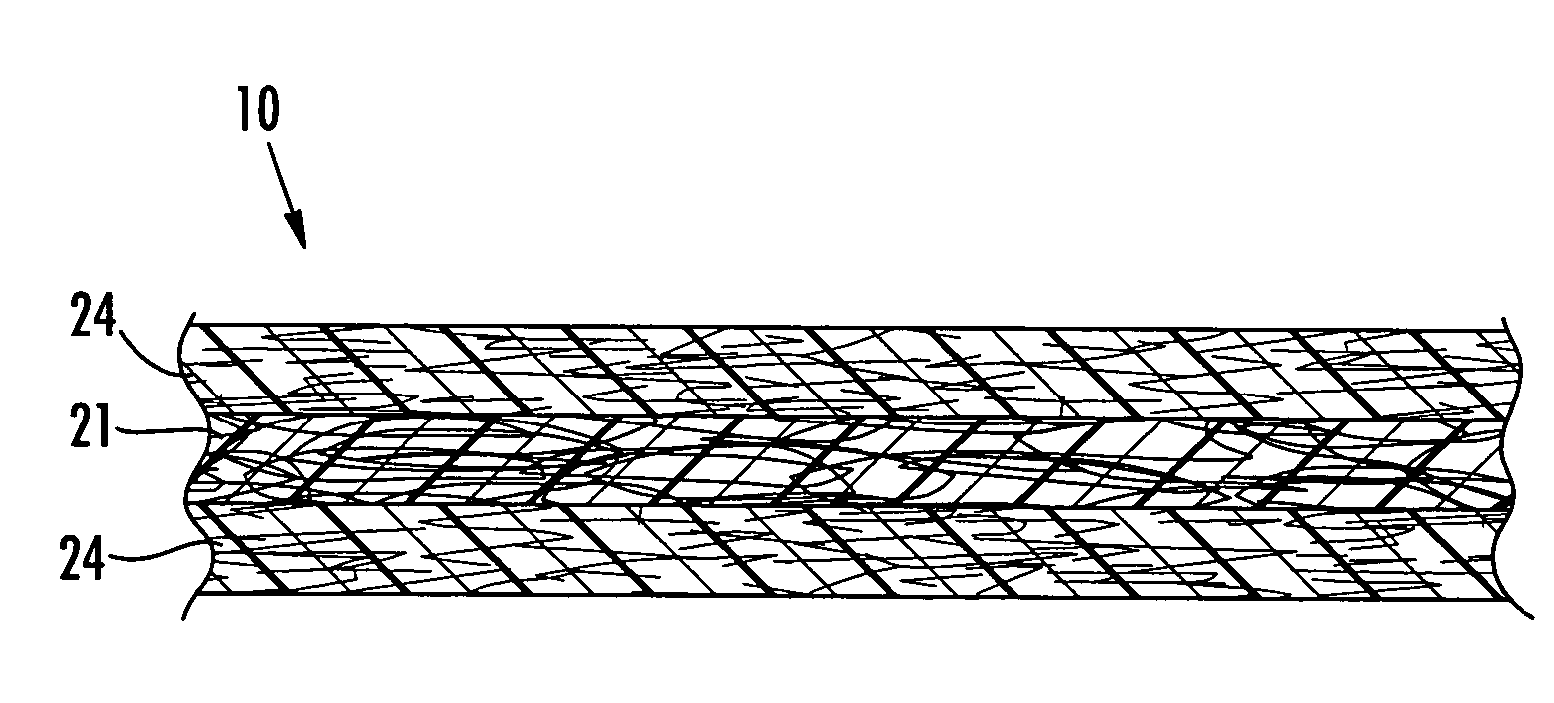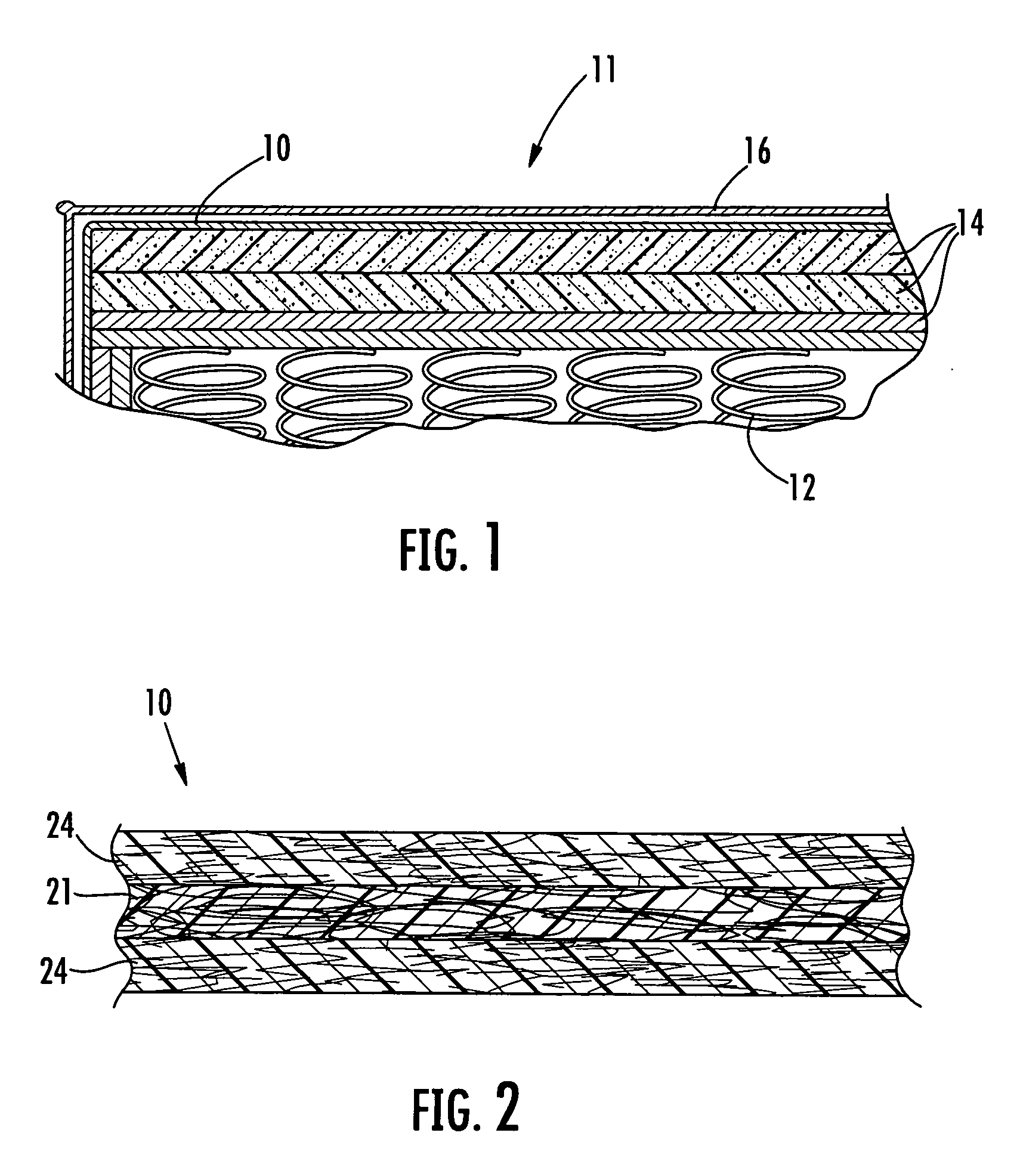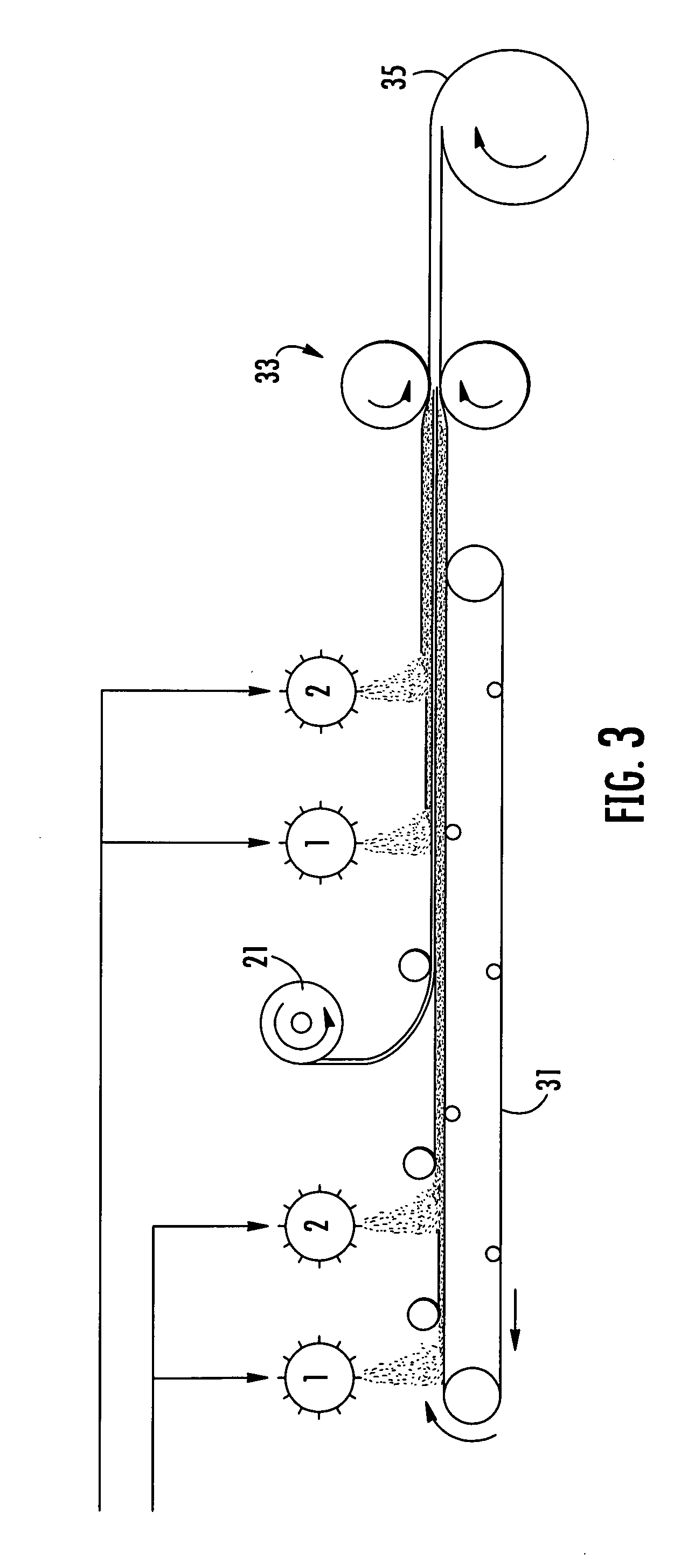Flame retardant composite fabric
a composite fabric and flame retardant technology, applied in weaving, furniture parts, other domestic objects, etc., can solve the problems of degradation of flame retardant performance, unsatisfactory change of the surface feel of the finished product, and previously available barrier fabrics are relatively expensive, and achieve the effect of light weigh
- Summary
- Abstract
- Description
- Claims
- Application Information
AI Technical Summary
Benefits of technology
Problems solved by technology
Method used
Image
Examples
Embodiment Construction
[0015] The present inventions now will be described more fully hereinafter with reference to the accompanying drawings, in which some, but not all embodiments of the inventions are shown. Indeed, these inventions may be embodied in many different forms and should not be construed as limited to the embodiments set forth herein; rather, these embodiments are provided so that this disclosure will satisfy applicable legal requirements. Like numbers refer to like elements throughout.
[0016] As shown in FIG. 1, the composite barrier fabric of the present invention is indicated by the reference character 10. As shown in FIG. 1, the barrier fabric 10 is incorporated into a mattress 11. The mattress shown in FIG. 1 has a core formed by springs 12, and multiple layers of cushioning material 14 are positioned on opposite sides of the core. The cushioning material may comprise cotton batting, foam, or other known materials. These layers of cushioning material are typically flammable, and will b...
PUM
| Property | Measurement | Unit |
|---|---|---|
| weight percent | aaaaa | aaaaa |
| weight percent | aaaaa | aaaaa |
| softening temperature | aaaaa | aaaaa |
Abstract
Description
Claims
Application Information
 Login to View More
Login to View More - R&D
- Intellectual Property
- Life Sciences
- Materials
- Tech Scout
- Unparalleled Data Quality
- Higher Quality Content
- 60% Fewer Hallucinations
Browse by: Latest US Patents, China's latest patents, Technical Efficacy Thesaurus, Application Domain, Technology Topic, Popular Technical Reports.
© 2025 PatSnap. All rights reserved.Legal|Privacy policy|Modern Slavery Act Transparency Statement|Sitemap|About US| Contact US: help@patsnap.com



